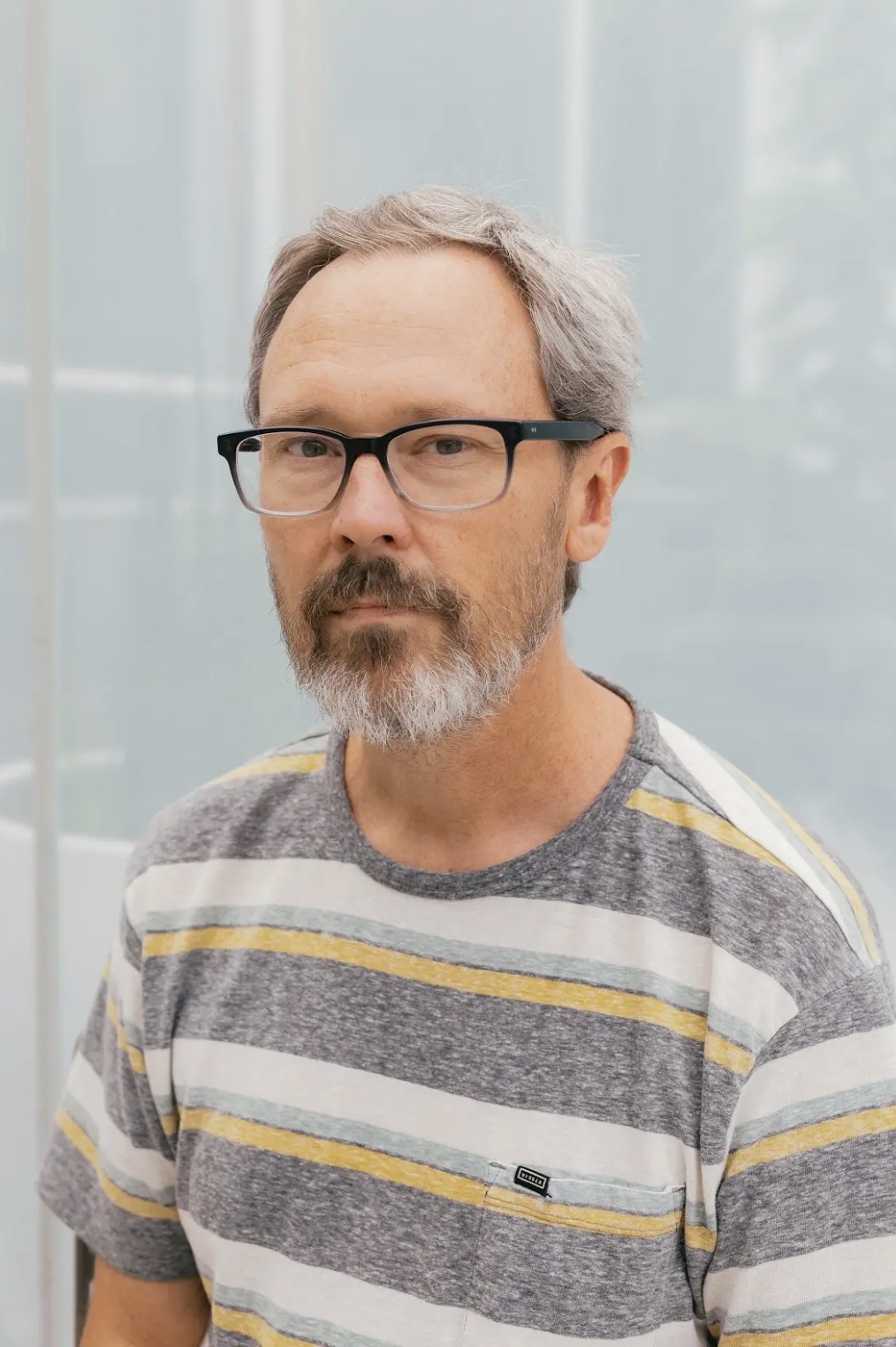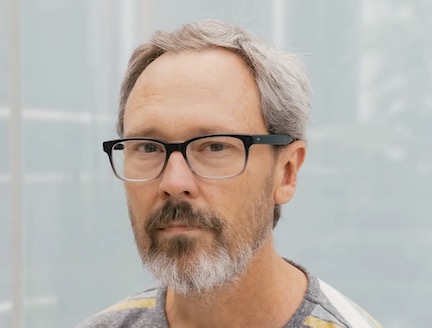Editor’s note: With the help of a special agent working undercover at the Academy Art Museum, the Spy shares this interview with the newly appointed Director of Education, Matt Moore. An accomplished photographer and educator, Matt talks about his passion for community engagement, innovative teaching, and artistic exploration.l
Hi Matt! The Academy Art Museum is thrilled to have you on board as the new Director of Education and Interpretation. Let’s dig in and get some insight into your background and ethos.
Thank you! I’m thrilled to be here. Let’s do it.
As a long-standing member of our community, can you recall a favorite program that you attended at the AAM?

Matt Moore
Some years ago, Tina Barney came and gave a lecture about her work that really impressed me. Tina Barney is a very well-known photographic artist, and while the lecture was good, I was more impressed with the fact that the Academy was bringing in a contemporary photographic artist of her significance. It gave me the opportunity to invite photo friends from Baltimore and DC to Easton, and quite a few of them made the trip because they recognized her lecture as a unique opportunity. It is one of a handful of events in that helped put the Academy on the map for the contemporary photography scene in the mid-Atlantic.
What is the number one goal you’ll be focusing on during your first six months here at the Academy Art Museum?
Getting to know people. I want to get to know the instructors, the students, and the members of the community that I have not had a chance to meet yet. It’s their museum, and I am here to serve them, so this will be critical to forming a vision for the future of education at the Academy.
How do you see the role of our community in your job?
The main thing that drew me to this position is the opportunity to have an impact on my own community. Coming from a community college background, this is something I am really passionate about. I’ve said before that I believe the community college and the Academy Art Museum have a lot in common, because both institutions serve the entire community. People need a creative outlet now more than ever, and to serve the entire community, we cannot cater to just a few ideas of what art is. That means broadening our focus and trying to connect with pockets of the community that we might not be reaching. I want everyone that has some desire to experience art or learn about art to feel like the museum is their home base for that. I want this to be a place where weird ideas become a reality, and it won’t happen without the community’s involvement.
How does your photographic practice intersect with your educational goals and strategies?
I believe that critique is the cornerstone of learning when it comes to art education. Separating yourself from your artwork and allowing others to interpret it, and judge it, can be a critical part of the process of making art. That is true for students at all levels, and it is still true for me as well. I know that many people enter an art class because they want to learn technique, but I’m not sure it’s the most valuable thing a person can take away from a studio art class. In my classes, I often tell students there are only five or six days during a semester when they will learn to make better pictures, and those days are critique days. Teaching them about camera operation or printing techniques might make them technically more proficient, but it will not make them better artists. Hearing how their peers interpret their work, without trying to influence them in the process, can have a profound effect on the way students approach making photographs. That is something you get from an art class that I consider invaluable. I have a few trusted friends that I still show my work to, and they are trusted because they will let me know if it’s not working. Many working artists that I know still seek out this kind of feedback, so it doesn’t end when you stop taking classes.
I snooped on your Instagram, and it seems you love to travel. How does travel broaden your imagination, and what do you bring home with you after a trip (ideologically or object-wise!)
Yes, I’ve always felt a need to explore, and probably because of that, travel has become a necessary component of my artwork. Much of my work involves in-depth exploration of specific regions, looking for patterns in the landscape that reveal things about cultures and communities. My last big project was an eight-year exploration of the landscape in post-communist European states, and right now I’m working on a new project in the American southwest. Sometimes I do these trips alone, and sometimes I sort of sneak in a few shooting excursions while traveling with my family. I think they’ve become pretty used to me planning a family trip that just happens to be going by a place I really want to photograph. It’s been nice getting to expose my kids to the type of travel that I do. They’ve had some pretty extraordinary experiences, and I think one day they will realize that they’ve seen more of the world than most people their age.
You’ve crisscrossed the country, living in rural and urban settings. How does this affect the subject matter in your work?
Yes, I’ve lived in some interesting places, including Detroit, Atlanta, Prague, and of course now Easton. But it doesn’t really change the way I approach my subject matter. Whether I’m in a desolate place, a small town, or a big city, I am always looking for the layers of historic information embedded in the contemporary environment. Each of these different landscapes offer a palimpsest of information, and you have sort of train your eye to notice the details that have blended together over time. I just love exploring the world in this way, and the Eastern Shore has been an especially rich place to explore. It’s easy to look past the historic significance of things we walk by on a daily basis, so I’m always trying to maintain what I think of as insider/outsider relationship with my surroundings. I try to train my eyes to see things from the outsider perspective, while also maintaining the familiarity of an insider.
You were a tenured professor before you made the switch to our museum, what inspired you to make a change?
It was a tough decision, but this is a really unique opportunity. As I mentioned earlier, it’s an opportunity to engage my own community through art education. But also, it’s a chance to do things with education that is becoming harder to do in an academic setting. Academia is becoming corporatized, and it’s not always easy to offer new and innovative classes because of the layers of bureaucracy embedded in higher education. For example, If I wanted to teach a class on making art about climate change or doing public interventions in the landscape (and I do want to teach both of those classes!), it might take me over a year to get them approved, and it may not happen at all. I’m also not sure that colleges need to be the only places where people can get quality art education. I taught at a community college because I believed in the mission of making higher education more accessible, and I am proud of the 15 years I put into that mission. But people that want to be practicing artists, either professionally, or for personal enrichment, don’t necessarily need a degree to do that. I think we can help people become exhibiting artists right here at the Academy. We can and should have a robust art school here on the mid-shore that provides serious, high-quality education. That is what I believe, and that is what I hope to accomplish in this role.
Finally, what is your favorite work currently on view at the AAM?
Seen and Unseen by Anne Lindberg, the site-specific installation in the atrium is amazing! I also like the marble towels by Sabastian Martorana that are installed near the restrooms. I love humor in art!




Write a Letter to the Editor on this Article
We encourage readers to offer their point of view on this article by submitting the following form. Editing is sometimes necessary and is done at the discretion of the editorial staff.